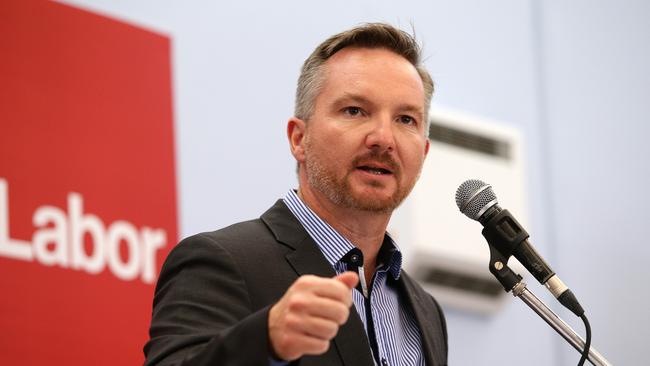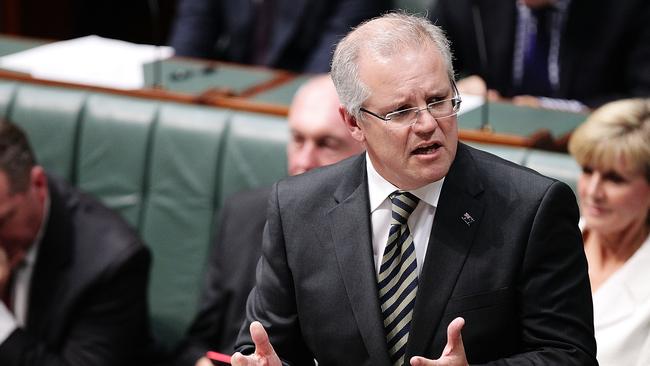Negative gearing: what the proposed reforms mean for first-home buyers
BOTH sides of politics are committing to make big changes that could make buying a home a lot easier. Here’s what it means for you.

BOTH sides of politics are working on bold economic reforms that could help first home buyers enter the property market.
The Federal Government and the Opposition are each looking at major shake-ups to negative gearing — the practice that allows investors to offset losses on investment properties against their taxable income, in order to gain a tax break.
As it applies in the housing market, negative gearing has long been accused of locking struggling first home buyers out of the market while benefiting cashed-up investors, and even of contributing to soaring house prices.
Both parties will take their policies to the next election, and it could be first home buyers who emerge as winners.
The Turnbull Government is understood to still be working on its plan, which will either cap the number of properties that can be geared by investors, or limit the annual tax deductions that can be claimed.
Treasurer Scott Morrison has reaffirmed his comments last week that “if there are inadequacies in the current system, areas where it is being abused or excesses, the government would look at those things’’.
More details are expected when Mr Morrison addresses the National Press Club on Wednesday.
Labor, meanwhile, has a plan of its own — to fix the “leaky bucket” of Australia’s tax system by restricting negative gearing to investments on new homes.

HOW IT COULD WORK
Labor’s proposed policy, which would restrict negative gearing to new housing stock, would also see the capital gains tax slashed from 50 per cent to 25 per cent. It aims to raise $32 billion over 10 years.
By limiting investors’ access to negative gearing only for new houses, Labor says it will boost new housing supply, drive down current prices and level the playing field for first home buyers.
“At the moment first-home buyers turn up at an auction with very little government support,” Shadow Treasurer Chris Bowen told ABC’s Insiders program on Sunday.
“People buying their second, third and 10th home have negative gearing and the capital gains tax discount which combine to be the most generous tax incentives for property investment in the world.
“When you’ve got the sort of budget pressures we have, when you’ve got the housing affordability crisis we have, that’s not fair; it’s not sustainable.”
Mr Bowen said half of negative gearing benefits went to just the top 20 per cent of income earners.
“The idea that somehow it’s cleaners and nurses who are getting the huge benefit out of negative gearing is just not right,” he said.
Mr Bowen said Labor’s reforms would ease Australia’s housing affordability crisis.
“We’re saying if you want to grow your wealth with negative gearing, if you aspire to do that, we embrace that — but all we ask is that you work with us to ensure that we can build the housing supply,” he said.
“The answer to housing affordability, which is at crisis levels, is to have more houses and apartments being built.
“The proponents of the current arrangement say negative gearing increases housing supply. It doesn’t; it’s a falsehood.
“Ninety-three per cent goes into existing properties and that means, in effect, if [increasing the housing supply is] your policy objective, you’ve got a failure rate of 93 per cent.”
Labor says its policy would create 25,000 construction jobs a year.
It would apply from July 2017 and grandfather existing investments, leaving them unaffected.
Grattan Institute chief executive John Daley said while the policy would lead to house prices falling by less than 10 per cent, it would make it easier for renters to become homeowners.
“It will probably reduce house prices relative to where they are now, bearing in mind the impact won’t be huge — it won’t be as large as the swings you’d get in a normal housing cycle, but it will lead to an increase in more long-term home ownership … it’s a terrific thing,” he said.

IT’S NOT THAT SIMPLE
But the government has warned Labor’s proposed policy would actually make it harder for first home buyers to buy a newly constructed home, as they’d be competing against investors seeking negative gearing a much more narrow market.
“Investors accessing negative gearing will now have only one option in the housing market, and if you’re a first home buyer looking to buy a new home you’ll be competing with all of them,” Federal Treasurer Scott Morrison said.
“Labor thinks all people who negatively gear are property barons to be fleeced.”
Mr Morrison also said Labor’s plan would drive up rent as investors disappeared from the existing housing market, a claim which Labor denies would be the case.
His cabinet colleague Josh Frydenberg called Labor’s proposed policy “a joke”, arguing
around 70 per cent of those who accessed negative gearing had incomes below $100,000 — meaning it was middle-income earners, and not the rich, who’d be hardest hit by Labor’s proposed changes.
The Property Council of Australia agreed, saying of the 1.2 million Australians who negative gear, 840,000 earned less than $80,000 a year.
The council’s chief executive Ken Morrison said Labor’s plan was risky.
“This is a risky intervention in housing markets at a time when supply is meeting demand for the first time in a decade and prices are slowing,” he said.
“It’s not a good time to be risking major changes to such a key part of Australia’s economy.
“The halving of the capital gains tax discount will be bad for new housing supply, even with their negative gearing changes.
“You can’t increase taxes on housing by $32 billion and not affect rents, housing construction or prices.
“The big risk is investors simply walking away from property — drying up supply at the time we need it most. It will also risk putting the property market on a rollercoaster ride that will damage economic confidence.”
Master Builders Australia chief executive Wilhelm Harnisch said quarantining negative gearing to new homes had certain attractions for the residential building sector, but cutting the capital gains tax to 25 per cent was the “sting in the tail”.
“Our concern is that Labor’s policy is a populist response to those who demonise housing and negative gearing as primary cause of our fiscal and social problems,” he said.
“Investing in new private rental housing is not evil.”



